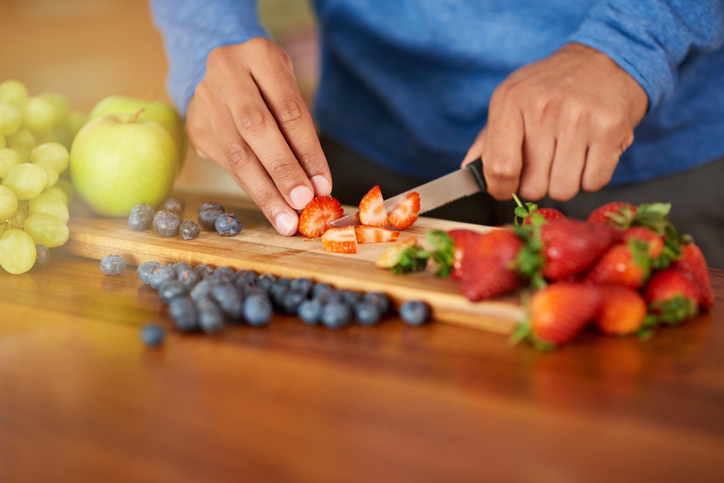Blog

You may remember from last week’s blog, I love prepping meals at home! I often make recipes that require quite a bit of cutting and chopping, especially when using fresh meats and produce. Knife accidents are common in household kitchens, but can be avoided if you use some good habits.
- Always pick up knives by the handle. Never touch the blade, even when it is dull.
- Choose the correct size knife for the task that you are doing. For instance, if you’re cutting a strawberry, use a small knife like a paring knife. If you’re cutting large cuts of meat into smaller pieces, then a larger, sharp knife would be the best choice. It is most important to choose a knife that feels comfortable and controlled in your hand.
- Cut food items away from the body and always use a flat surface. Cutting foods away from the body decreases the chances of an accident. Cut food on a flat surface (such as a cutting board), so it stays in one place. Do not hold food in your hand while you cut it. Be sure to keep it on the cutting board at all times to avoid having your knife slip and hurt you.
- Wash knives immediately after use. Do not place knives in a sink of soapy water to soak with other dishes. Be sure to take caution when cleaning the knife blade and let the knife air dry. When not in use, store knives safely. Knives are safe in a shield or in a drawer where the blade will not rub against other tools that could dull or damage the blade. Most importantly, keep them out of the way of kitchen traffic or reach of small children.
Next week, the last blog in our kitchen safety series will be on fire safety.
Written by Annie Contrady, ISU Dietetic Intern
